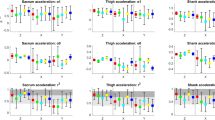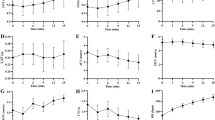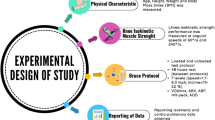Abstract
Study design: This study analyzed the reproducibility of a field test. In a previous study, we showed that this test, the Adapted Leger and Boucher Test (ALBT), was progressive and maximal. The Leger and Boucher predictive equation for able-bodied subjects was not accurate for WD athletes, however, and a new predictive equation is needed.
Objectives: To determine the reproducibility of an adapted incremental field test for wheelchair-dependent (WD) athletes.
Setting: France at Montpellier.
Methods: The proposed protocol was conducted on a 400 m track. Eight male paraplegics (mean age: 30.8±5.1 years) performed the test three times in the same conditions, ie same time of day, same wheelchair, same material. Maximal heart rate (HRmax) and maximal speed (Smax) were measured.
Results: We found no significant differences (P>0.05) between tests for either variable. The Bland and Altman graphic analyses showed a good reproducibility for both variables. Lastly, the reproducibility coefficients of HRmax and Smax were very low (2% and 1%, respectively).
Conclusion: The ALBT is reproducible concerning measurements of HRmax and Smax. A valid predictive equation of maximal oxygen uptake from the Smax is now needed for WD athletes during this field test.
Similar content being viewed by others
Log in or create a free account to read this content
Gain free access to this article, as well as selected content from this journal and more on nature.com
or
Author information
Authors and Affiliations
Rights and permissions
About this article
Cite this article
Poulain, M., Vinet, A., Bernard, P. et al. Reproducibility of the Adapted Leger and Boucher Test for wheelchair-dependent athletes. Spinal Cord 37, 129–135 (1999). https://doi.org/10.1038/sj.sc.3100774
Published:
Issue date:
DOI: https://doi.org/10.1038/sj.sc.3100774
Keywords
This article is cited by
-
Field-Based Physiological Testing of Wheelchair Athletes
Sports Medicine (2013)
-
Prediction of VO2peak in wheelchair-dependent athletes from the adapted Léger and Boucher test
Spinal Cord (2002)



